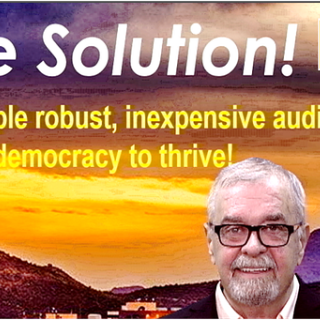Advertisement
Noted climate scientist Ken Caldeira of the Carnegie Institute for Science at Stanford has finally popped the question. In an article entitled “One Known Way to Cool the Earth” on the February 16, 2015 USA Today opinion page, Caldeira writes: “There is basically only one way known to cool the Earth rapidly.” He explains the method “…is to reflect more of the sun’s warming rays back to space.”
What will it take to do this? According to Caldeira, only “A small fleet of airplanes could do what large volcanos do – create a layer of small particles high in the atmosphere that scatters incoming sunlight back to space. Cooling the Earth this way, could be fast, cheap and easy.”
The reality is that the U.S. government has been spraying for well over a decade and a half in plain view while attacking anyone pointing it out. They’ve been making a chemical haze of clouds and putting a sunscreen in the sky. Small white planes, some of them associated with Battelle Memorial Institute, have been creating clouds in a criss-cross pattern in the sky.
Worrying about “Chemtrails” is often derided as a tinfoil hat conspiracy but transparency almost broke out when former Congressman Dennis Kucinich actually introduced a bill referring to the elimination of Chemtrails in 2002. He removed the term in a later version of the bill.
In December 2001 I had written an article called “Stormy weather – The government’s top secret efforts to control Mother Nature.” In the story I quoted Caldeira, then a scientist at Lawrence Livermore Labs, who admitted that he had conducted the original computer modeling for the use of chemicals like aluminum oxide to fight global warming.
He told me at the time, “We originally did the study to show that this program shouldn’t be done.” He alluded to possibly negative health effects from using massive chemical spraying for weather modification.
At the time, the leading promoter of this “Better living through chemistry” approach to global warming remediation was Edward Teller. The father of the H-bomb and grand promoter of Atoms for Peace, Teller spent his last few years advocating aerial spraying to counter global warming before he died in 2003.
The April 24, 2002 New York Times reported that Teller “has promoted the idea of manipulating the Earth’s atmosphere to counteract global warming.”
Two scientists from Wright Patterson Air Force Base in Dayton, Ohio acknowledged that planes were already spraying barium salt polymer fibers, aluminum oxide and other chemicals in the atmosphere to both modify the weather and for military communication purposes. The military has been using spraying to make cloud formations that create “sky antennas” to assist drones and provide over the horizon communication. Kucinich referred me to the military’s document “Joint Vision for 2020” that outlines a directed energy program designed for “full spectrum dominance of the Earth.”
The Wright Pat scientists pointed to a paper by the United States Air Force entitled: “Weather as a force multiplier: Owning the weather by 2025.” The scientists referred me to U.S. patent #6315213 filed on November 13, 2002. The patent abstract specifically states: “The polymer is dispersed into the cloud and the wind of the storm agitates the mixture causing the polymer to absorb the rain. This reaction forms a gelatinous substance which precipitate to the surface below. Thus, diminishing the cloud’s ability to rain.”
Caldeira explained, “With the Earth in a fevered state, the pressure to put on a ‘solar geoengineering’ ice pack could become irresistible, especially if this ice pack could potentially save millions of lives.”
The U.S. government needs to come clean on this top secret program that’s being done without any environmental impact statements. In a democracy we need full transparency and the public needs to know what the government knows that justifies this aerial sunscreen spraying. At least Caldeira spells it out: “If current trends in green-house gas emissions continue, unprecedented megadroughts may plague much of the western USA, and the tropics may get so hot that widespread crop failures and famines become commonplace.”
Photo courtesy of Willthomasonline




